What happens when you get an electric shock. Electric Shock Effects on the Human Body: Understanding Dangers and First Aid
What are the effects of an electric shock on the human body. How does the type of current and voltage impact the severity of an electrical injury. When should you seek emergency medical care after an electric shock. What are the proper first aid steps for treating an electrical burn or injury.
Understanding the Dangers of Electric Shock
An electric shock occurs when electrical current passes through the human body. The severity and effects can vary widely depending on several key factors:
- Type of current (AC or DC)
- Voltage level
- Path of current through the body
- Duration of contact with electricity
- Overall health of the person
- How quickly medical treatment is received
Even a relatively small amount of electricity can potentially be fatal under certain circumstances. The dangers go beyond just surface burns – internal damage and cardiac issues are serious risks.
Recognizing Electric Shock Symptoms and Injuries
How can you tell if someone has suffered an electric shock? Here are some common signs and symptoms to watch for:

- Burns on the skin (entry and exit points)
- Muscle pain and contractions
- Confusion or disorientation
- Difficulty breathing
- Irregular heartbeat (arrhythmia)
- Seizures
- Loss of consciousness
Importantly, the absence of visible burns does not mean internal damage hasn’t occurred. Electrical current can cause severe internal injuries that may not be immediately apparent.
When to Seek Emergency Medical Care
After any electrical injury, it’s crucial to be evaluated by a medical professional. However, certain symptoms require immediate emergency care. Call 911 or your local emergency number if the person experiences:
- Severe burns
- Cardiac arrest
- Difficulty breathing
- Seizures
- Loss of consciousness
- Confusion
- Heart rhythm abnormalities
Time is of the essence with electrical injuries. Prompt medical attention can be life-saving.
First Aid for Electric Shock Victims
If someone has suffered an electric shock, follow these critical first aid steps while waiting for emergency medical help to arrive:

- Ensure the scene is safe. Do not touch the person if they are still in contact with the electrical source.
- Turn off the power source if possible. If not, use a non-conducting object (like wood or plastic) to move the source away from the victim.
- Check for signs of circulation (breathing, coughing, movement). Begin CPR if necessary.
- Cover any burns with sterile gauze or clean cloth. Avoid using blankets or towels, as loose fibers can stick to burns.
- Keep the person warm to prevent shock.
- Stay with the victim until emergency help arrives.
Understanding Electrical Burns
Electrical burns differ from typical thermal burns in several important ways:
- They may cause more internal damage than is visible on the skin
- There are often both entry and exit wounds where the current entered and left the body
- They can cause muscle and tissue damage deep beneath the skin
- Electrical burns may continue to worsen over time if not properly treated
Due to these unique characteristics, all electrical burns should be evaluated by a medical professional, even if they appear minor on the surface.

Preventing Electrical Injuries
While accidents can happen, many electrical injuries are preventable. Here are some key safety tips to reduce your risk:
- Inspect electrical cords regularly and replace any that are frayed or damaged
- Never use electrical appliances near water
- Install ground fault circuit interrupters (GFCIs) in bathrooms, kitchens, and other areas where water is present
- Teach children about electrical safety and keep them away from electrical outlets
- Use caution when working with electricity outdoors, especially near power lines
- Always follow proper safety procedures when working with electrical equipment
By being aware of potential hazards and taking proper precautions, you can significantly reduce the risk of electrical injuries in your home and workplace.
Long-Term Effects of Electrical Injuries
While immediate treatment is crucial, electrical injuries can also have long-lasting impacts on a person’s health. Some potential long-term effects include:
- Chronic pain
- Neurological problems
- Psychological issues (like PTSD)
- Vision or hearing problems
- Muscle weakness or spasms
- Ongoing cardiac issues
The severity and duration of these effects can vary widely depending on the nature of the initial injury. Ongoing medical care and rehabilitation may be necessary for some individuals who have suffered serious electrical injuries.

Neurological Complications
How does electricity affect the nervous system? Electrical current can disrupt the normal functioning of neurons, leading to various neurological issues:
- Memory problems
- Difficulty concentrating
- Peripheral nerve damage
- Seizures
- Sleep disturbances
These effects may be temporary or permanent, depending on the severity of the injury and the specific areas of the nervous system affected.
Psychological Impact
The trauma of experiencing an electrical injury can have significant psychological effects. Some individuals may develop:
- Anxiety disorders
- Depression
- Post-traumatic stress disorder (PTSD)
- Fear of electricity or electrical devices
Professional counseling and support may be beneficial for those struggling with the emotional aftermath of an electrical injury.
Special Considerations for High-Voltage Injuries
High-voltage electrical injuries, such as those from power lines or industrial equipment, present unique challenges and dangers. These injuries often result in more severe damage and require specialized treatment.

Characteristics of High-Voltage Injuries
What makes high-voltage electrical injuries different from lower voltage shocks? Here are some key factors:
- Greater risk of deep tissue damage
- Higher likelihood of entry and exit wounds
- Increased risk of compartment syndrome
- More severe burns, often requiring skin grafts
- Higher mortality rate
Due to these factors, high-voltage electrical injuries often require more extensive medical intervention and longer recovery periods.
Treatment for High-Voltage Injuries
The treatment approach for high-voltage electrical injuries may include:
- Intensive care unit monitoring
- Surgical debridement of damaged tissue
- Fasciotomy to relieve compartment syndrome
- Skin grafts for severe burns
- Specialized cardiac monitoring
- Rehabilitation therapy
Recovery from high-voltage injuries can be a lengthy process, often requiring a multidisciplinary medical team and ongoing follow-up care.
Electrical Safety in the Workplace
Many electrical injuries occur in occupational settings. Employers and employees both play crucial roles in maintaining electrical safety in the workplace.

Employer Responsibilities
What steps should employers take to protect workers from electrical hazards? Key responsibilities include:
- Providing proper safety training
- Ensuring equipment is properly maintained
- Supplying appropriate personal protective equipment (PPE)
- Implementing and enforcing safety protocols
- Conducting regular safety inspections
By prioritizing electrical safety, employers can significantly reduce the risk of workplace electrical injuries.
Employee Safety Practices
Workers can protect themselves by following these safety guidelines:
- Always use proper lockout/tagout procedures
- Wear appropriate PPE when working with electricity
- Never work on live electrical equipment unless absolutely necessary and properly trained
- Report any electrical hazards or faulty equipment immediately
- Stay up-to-date on safety training and best practices
By working together, employers and employees can create a safer work environment and reduce the risk of electrical injuries.
Advancements in Electrical Injury Treatment
Medical science continues to make strides in understanding and treating electrical injuries. Some recent advancements include:

- Improved diagnostic techniques to assess internal damage
- Advanced burn treatment methods
- New approaches to managing long-term neurological effects
- Innovative rehabilitation techniques
- Better understanding of the long-term health impacts of electrical injuries
These advancements are helping to improve outcomes for electrical injury victims and provide better guidance for prevention efforts.
Future Directions in Research
What areas of electrical injury research hold promise for the future? Some key focus areas include:
- Developing new treatments for deep tissue injuries
- Improving methods for assessing and treating neurological damage
- Exploring regenerative medicine approaches for severe burns
- Enhancing rehabilitation strategies for long-term recovery
- Investigating the genetic factors that may influence susceptibility to electrical injuries
Ongoing research in these areas may lead to significant improvements in the treatment and long-term outcomes for electrical injury victims.
Understanding the dangers of electric shock and knowing how to respond in an emergency can save lives. By prioritizing electrical safety and staying informed about proper first aid techniques, we can all play a role in preventing and mitigating the impacts of electrical injuries. Whether at home, in the workplace, or out in the community, being prepared and aware is key to staying safe around electricity.
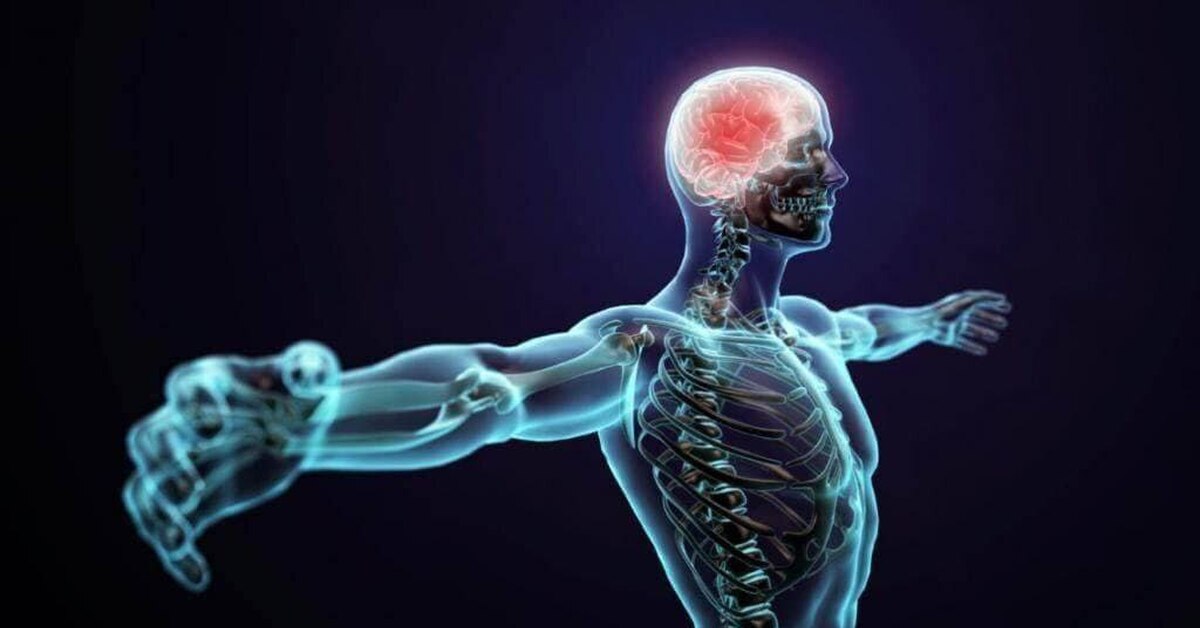
Electrical shock: First aid – Mayo Clinic
The danger from an electrical shock depends on the type of current, how high the voltage is, how the current traveled through the body, the person’s overall health and how quickly the person is treated.
An electrical shock may cause burns, or it may leave no visible mark on the skin. In either case, an electrical current passing through the body can cause internal damage, cardiac arrest or other injury. Under certain circumstances, even a small amount of electricity can be fatal.
When to contact your doctor
A person who has been injured by contact with electricity should be seen by a doctor.
Caution
- Don’t touch the injured person if he or she is still in contact with the electrical current.
- Call 911 or your local emergency number if the source of the burn is a high-voltage wire or lightning. Don’t get near high-voltage wires until the power is turned off.
 Overhead power lines usually aren’t insulated. Stay at least 20 feet (about 6 meters) away — farther if wires are jumping and sparking.
Overhead power lines usually aren’t insulated. Stay at least 20 feet (about 6 meters) away — farther if wires are jumping and sparking. - Don’t move a person with an electrical injury unless he or she is in immediate danger.
When to seek emergency care
Call 911 or your local emergency number if the injured person experiences:
- Severe burns
- Confusion
- Difficulty breathing
- Heart rhythm problems (arrhythmias)
- Cardiac arrest
- Muscle pain and contractions
- Seizures
- Loss of consciousness
Take these actions immediately while waiting for medical help:
- Turn off the source of electricity, if possible. If not, move the source away from you and the person, using a dry, nonconducting object made of cardboard, plastic or wood.
- Begin CPR if the person shows no signs of circulation, such as breathing, coughing or movement.
- Try to prevent the injured person from becoming chilled.

- Apply a bandage. Cover any burned areas with a sterile gauze bandage, if available, or a clean cloth. Don’t use a blanket or towel, because loose fibers can stick to the burns.
Get the latest health advice from Mayo Clinic delivered
to your inbox.
Sign up for free, and stay up-to-date on research
advancements, health tips and current health topics,
like COVID-19, plus expert advice on managing your health.
Learn more about our use of data
To provide you with the most relevant and helpful information and to understand which
information
is beneficial, we may combine your e-mail and website usage information with other
information we have about you. If you are a Mayo Clinic Patient,
this could include Protected Health Information (PHI). If we combine this information
with your PHI, we will treat all of that information as PHI,
and will only use or disclose that information as set forth in our notice of privacy
practices. You may opt-out of e-mail communications
You may opt-out of e-mail communications
at any time by clicking on the Unsubscribe link in the e-mail.
Subscribe!
Thank you for Subscribing
Our Housecall e-newsletter will keep you up-to-date
on the latest health information.
We’re sorry! Our system isn’t working. Please try again.
Something went wrong on our side, please try again.
Please try again
July 14, 2020
Show references
- First aid for electric shock. American Institute for Preventive Medicine. http://www.healthy.net/Health/Article/First_Aid_for_Electric_Shock/1490. Accessed Jan. 22, 2018.
- Electrical injuries. Merck Manual Professional Version. https://www.merckmanuals.com/professional/injuries-poisoning/electrical-and-lightning-injuries/electrical-injuries. Accessed Jan.
 22, 2018.
22, 2018. - AskMayoExpert. Electrical injury. Rochester, Minn.: Mayo Foundation for Medical Education and Research; 2015.
- Kermott, CA, et al., eds. Emergencies and urgent care. In: Mayo Clinic Guide to Self-Care. 7th ed. Rochester, Minn.: Mayo Foundation for Medical Education and Research; 2017.
- Emergencies A-Z: Electrical injury-shock. American College of Emergency Physicians. http://www.emergencycareforyou.org/Emergency-101/Emergencies-A-Z/Electrical-Injury-Shock/. Accessed Jan. 22, 2018.
- Electrical injuries. Merck Manual Professional Version. https://www.merckmanuals.com/professional/injuries-poisoning/burns. Accessed Jan. 22, 2018.
Products and Services
- Book: Mayo Clinic Guide to Raising a Healthy Child
.
Why Do I Get an Electric Shock? (for Kids)
Have you ever been “shocked” when you touched a doorknob, a car-door handle, or a water fountain? Ouch! Well, then you already know something about the effects of static electricity.
A Shocking Atom
What you might not know is how static electricity happens. It all starts with a tiny thing called an atom. Everything in the world is made up of atoms — from your pencil to your nose. An atom is so small you can’t see it with your eyes — you’d need a special microscope. Think of atoms as building blocks for all the stuff in the world.
Each tiny atom is made up of even tinier things:
- protons (say: PRO-tahnz), which have a positive charge
- electrons (say: ih-LEK–trahnz), which have a negative charge
- neutrons (say: NOO-trahns), which have no charge
Most of the time, atoms have the same number of protons and electrons and the atom charge is neutral (not positive or negative). Static electricity is created when positive and negative charges aren’t balanced. Protons and neutrons don’t move around much, but electrons love to jump all over the place!
When an object (or person) has extra electrons, it has a negative charge. Things with opposite charges are always attracted to each other, so positive charges seek negative ones and negative ones seek positives. Whew! Got it?
Things with opposite charges are always attracted to each other, so positive charges seek negative ones and negative ones seek positives. Whew! Got it?
Beware of Conductors!
If you scuff your feet on your living room rug, you pick up extra electrons and have a negative charge. Electrons move more easily through certain materials like metal, which scientists call conductors. When you touch a doorknob (or something else made of metal), which has a positive charge with few electrons, the extra electrons want to jump from you to the knob.
That tiny shock you feel is a result of the quick movement of these electrons. You can think of a shock as a river of millions of electrons flying through the air. Pretty cool, huh? Static electricity happens more often during the colder seasons because the air is drier, and it’s easier to build up electrons on the skin’s surface. In warmer weather, the moisture in the air helps electrons move off of you more quickly so you don’t get such a big static charge.
So, the next time you get a little shock from touching a doorknob, you’ll know that it’s just electrons jumping around. Think of it as putting a little spark in your life!
Electrical Shock or Burn | HealthLink BC
Topic Overview
When you touch a light switch to turn on a light, you may receive a minor electrical shock. You may feel tingling in your hand or arm. Usually, this tingling goes away in a few minutes. If you do not have damage to the skin or other symptoms, there is no reason to worry.
If your skin is burned by electricity, there is cause for concern. Electrical burns may look minor at first. But the burn may be more serious if tissues along the path of the electrical current are damaged. All the damage from these burns might not be seen for up to 10 days after the burn. There might be burns where the electrical current enters the body and also where it leaves the body.
There might be burns where the electrical current enters the body and also where it leaves the body.
When electricity passes though your body, the electricity may injure blood vessels, nerves, and muscles. The electrical current may cause rapid and severe swelling in the throat and lungs, making it hard for a person to breathe. As the electrical current passes through the heart muscle, heartbeat problems can develop.
Electricity passing through your body can be powerful enough to cause a fall. This can cause other injuries such as fractures. Electricity can also cause strong muscle contractions that can cause injury.
Lightning strike
The skin burn from lightning strikes may not be severe. Lightning current usually flows over the body (flashover) and does not injure deeper organs or tissues, which is the reason some people can survive a lightning strike. A direct lightning strike can occur when a person is holding or wearing metal objects. Lightning can also strike objects near a person, and some of the lightning current can travel to the person indirectly (called a splash). The electrical current from lightning can cause the same problems as from other electrical sources, depending on how direct the strike is. Participating in outdoor sports activities increases your risk of being struck by lightning.
A direct lightning strike can occur when a person is holding or wearing metal objects. Lightning can also strike objects near a person, and some of the lightning current can travel to the person indirectly (called a splash). The electrical current from lightning can cause the same problems as from other electrical sources, depending on how direct the strike is. Participating in outdoor sports activities increases your risk of being struck by lightning.
You need to be evaluated by a doctor if you have been struck by lightning, even if the injury appears minor. Burns from a lightning strike or electrical power also need to be evaluated by a doctor.
Stun guns and tasers
Stun guns and tasers are called “electronic weapons.” They are handheld weapons that use electricity to stun a person. The electricity causes uncontrollable muscle contractions.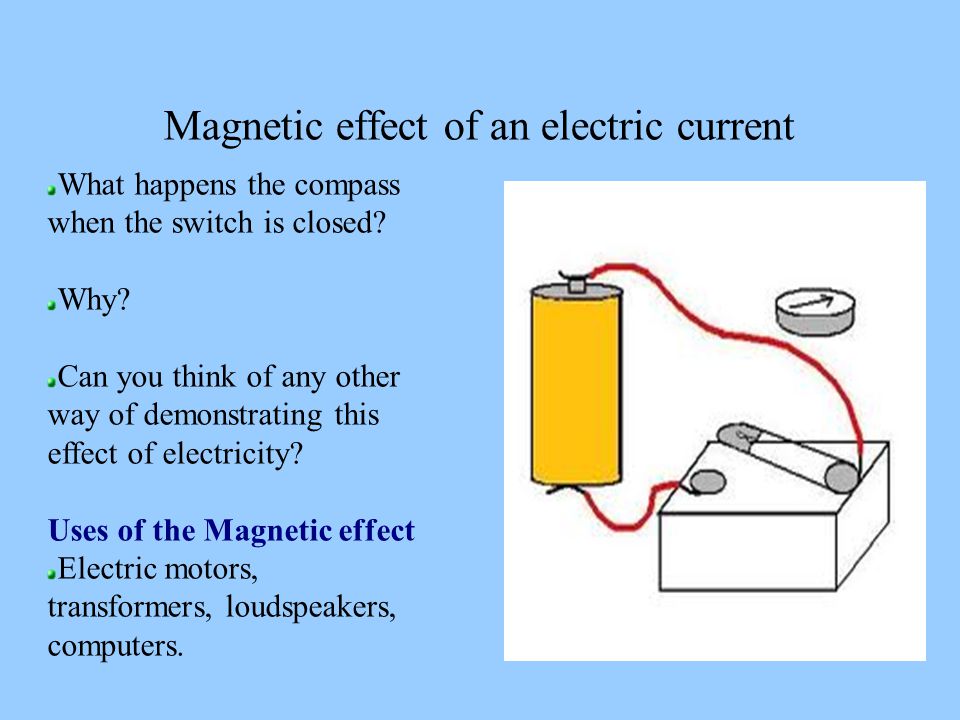 After being stunned with electricity, the person usually falls to the ground.
After being stunned with electricity, the person usually falls to the ground.
These weapons are less likely to cause death or injury than other weapons, such as handguns. But stun guns and tasers can cause serious medical problems, such as irregular heartbeats (arrhythmias). Others types of injuries include burns, cuts, muscle problems (rhabdomyolysis), twisting of a testicle (testicular torsion), and miscarriage.
electrical shock | Britannica
electrical shock, the perceptible and physical effect of an electrical current that enters the body. The shock may range from an unpleasant but harmless jolt of static electricity, received after one has walked over a thick carpet on a dry day, to a lethal discharge from a power line.
The great majority of deaths occur from alternating current at house-current frequencies of 60 hertz (cycles per second) in North America and 50 hertz in Europe. Most of the deaths occur from contact with conductors at less than 500 volts. That is not to say that high voltages are less dangerous, but they are generally present only on apparatus and supply lines operated by utility companies, which attempt to ensure that only trained and authorized persons have access to them.
That is not to say that high voltages are less dangerous, but they are generally present only on apparatus and supply lines operated by utility companies, which attempt to ensure that only trained and authorized persons have access to them.
Britannica Quiz
44 Questions from Britannica’s Most Popular Health and Medicine Quizzes
How much do you know about human anatomy? How about medical conditions? The brain? You’ll need to know a lot to answer 44 of the hardest questions from Britannica’s most popular quizzes about health and medicine.
The effects of electric shock on the human body depend on the current that flows—the amperage—rather than on the force of the current, or voltage. The electrical resistance of the human body is variable and may in fact alter considerably during the passage of an electric shock. Therefore, except in broad terms, applied voltage is not a consideration. This leads to difficulties in the investigation of accidents, for the electrical engineer is often able to state only the voltage applied, but the physician thinks in terms of the current that flowed.
Therefore, except in broad terms, applied voltage is not a consideration. This leads to difficulties in the investigation of accidents, for the electrical engineer is often able to state only the voltage applied, but the physician thinks in terms of the current that flowed.
Another important consideration is the path that the current takes through the body. Looked at as an electrical conductor, the body behaves as a solution of electrolytes in a leathery container. The greatest current density therefore occurs along the axis joining the two points of contact. As the distance perpendicular to the line of current flow increases, the density of current rapidly falls off. Thus, those organs most likely to be affected are those that lie close to the direct path of the current. As the great majority of electrical fatalities are due to currents passing between an arm (usually the right) and the legs, the current passes through the chest and affects the organs within it. Except in those extremely unusual accidents in which the head makes one of the points of contact, the brain does not lie on or near the pathway of the current.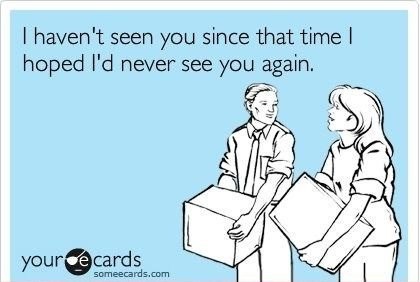
Get a Britannica Premium subscription and gain access to exclusive content.
Subscribe Now
An electric shock may directly cause death in three ways: paralysis of the breathing centre in the brain, paralysis of the heart, or ventricular fibrillation (uncontrolled, extremely rapid twitching of the heart muscle). It is generally believed that ventricular fibrillation is the most common cause of death in electric shock.
Cardiopulmonary resuscitation (CPR) is the best emergency first-aid treatment for victims of electrical shock. It is a highly effective technique when applied by a well-trained person and can, in many cases, provide adequate short-term life support until more sophisticated treatment is available.
Although the great majority of victims of electric shock, excluding those who have been burned, either die or recover completely, a very small number suffer from aftereffects, which may be temporary but are sometimes permanent. These may include cataract of the eye, a form of angina (attacks of pain beneath the breastbone), or various disorders of the nervous system. A variety of other conditions have been reported, but, in most cases, their exact relationship to the electrical accident is unclear or cannot be clinically substantiated.
A variety of other conditions have been reported, but, in most cases, their exact relationship to the electrical accident is unclear or cannot be clinically substantiated.
Electric Shock Injuries in Children
When the human body comes into direct contact with a source of electricity, the current passes through it, producing what’s called an electric shock. Depending on the voltage of the current and the length of contact, this shock can cause anything from minor discomfort to serious injury (even death).
Young children, particularly toddlers, experience electric shock most often when they bite into electrical cords or poke metal objects such as forks or knives into unprotected outlets or appliances. These injuries can also take place when electric toys, appliances, or tools are used incorrectly or when electric current makes contact with water in which a child is sitting or standing. Christmas trees and their lights are a seasonal hazard.
Prevention
The best way to prevent electrical injuries is to cover all outlets, make sure all wires are properly insulated, tuck wires away from your child’s reach, and provide adult supervision whenever children are in an area with potential electrical hazards. Small appliances are a special hazard around bathtubs or pools.
Small appliances are a special hazard around bathtubs or pools.
What You Can Do
Disconnect the power supply before you touch an injured child who is still receiving current; pull the plug or turn off the main switch.
Never touch a live wire with your bare hands. If you have to lift a live wire from a child, use a dry stick, a rolled-up newspaper, thick clothing, or another sturdy, dry, nonmetallic object that won’t conduct electricity.
Move the child as little as possible because severe electric shock may have caused a spinal fracture.
If you can’t remove the source of the current, try to move the child, but don’t use your bare hands. Insulate yourself with rubber or with any of the nonconductive items suggested for lifting a live wire so that the current doesn’t pass from the child’s body to yours.
Once the current is off, quickly check the child’s breathing, pulse, skin color, and alertness. If the child isn’t breathing or there is no heartbeat, begin CPR immediately while someone else goes for medical help.

Once the child is safely removed from the current, check him for burns and call 911, your local emergency number, or your pediatrician right away.
Treatment
A child who has received an electric shock should be seen by a pediatrician because shock may cause internal damage that can’t be detected without a medical examination.
Your pediatrician will clean and dress surface burns and order tests for signs of damage to internal organs.
Mouth burns (such as from biting an electric cord) are often much deeper than they appear. Your child may require surgery after the initial healing. Parents must be alert to the possibility of bleeding from mouth burns hours or even days after the injury. If bleeding occurs, apply a clean pad and call your pediatrician immediately. See First Aid for Burns: Parent FAQs.
If a child has severe burns or any sign of brain or heart damage, she will need to be placed in a hospital.

Additional Information on HealthyChildren.org:
The information contained on this Web site should not be used as a substitute for the medical care and advice of your pediatrician. There may be variations in treatment that your pediatrician may recommend based on individual facts and circumstances.
Electric Shock First Aid
An electric shock is a potentially fatal injury. Knowing how to apply first aid to a person who has been electrocuted is important to reduce the risk of severe complications and possibly death.
Image Credit: Microgen / Shutterstock
What is an Electric Shock?
An electric shock happens when a person comes into contact with a live source of electrical energy. It is a physical reaction to the passage of electrical currents through the body. These range from mild reactions to hazardous shocks that can affect the tissues in the body.
The danger of an electric shock depends on how high the voltage is, which part of the body is affected, and the type of current. The physical effects may range from burns to severe internal organ failure, cardiac arrest, and death, in severe cases.
ASHI & MEDIC First Aid | Electrical ShockPlay
Causes of an Electric Shock
Many individuals are at increased risk of high voltage shock or electric shock. It is mostly children, teenagers, and adults who are prone to this condition due to work exposure, man-made electrical items, and mischievous exploration.
Low voltage electricity usually does not cause serious injuries to humans. On the other hand, high voltage electricity (more than 500 volts) may result in serious tissue damage.
Among children, however, significant injuries may occur when exposed to a low voltage of about 110 to 220 volts, which is found in typical household current. They may be electrocuted by household appliances, extension cords, and electrical cords.
Signs and Symptoms of an Electric Shock
The physical effects of an electric shock on the body depend mainly on four factors:
- The amount of current that flows through the body
- The path the current takes through the body
- The amount of time the current remains flowing through the body, and
- The frequency of the current
The physical effects of an electric shock depend on the amount of current. Current of below 1 milliampere does not cause any physical effect. The person may feel a faint tingle from a 1 milliampere current and a slight shock from a 5 milliamperes current. However, for currents between 6 and 25 milliamperes, the patient may feel a painful shock and some loss of muscular control.
Electrical currents between 50 and 150 milliamperes may cause respiratory arrest, severe pain, and severe muscular contraction. In some cases, death is possible. For patients exposed to currents between 1,000 to 4,300 milliamperes, death is likely as the patient may experience nerve damage, muscular contraction, and cessation of the rhythmic pumping action of the heart.
Exposure to currents of as much as 10,000 milliamperes may cause severe burns and cardiac arrest. Death is probable.
The most common signs and symptoms include:
- Loss of consciousness
- The difficulty of breathing or cessation of breathing
- Burns occurring where the current entered and left the body
- Cardiac arrest
- Weak and erratic pulse or cessation of pulse
Electric Shock: What to do
The first step to do is to disconnect the power supply. Turn off the electricals supply, unplug the machine, or switch off the fuse box, if within reach. Don’t attempt to touch the victim until you’re certain the power supply is turned off.
Be careful in areas that are wet such as bathrooms, pool areas, and wet grounds. Water is an electrical conductor and you may get electrocuted. If you’re uncertain about wet grounds, make sure the main electricity supply of the house or building is turned off.
If turning off the power supply is not possible, use a material that does not conduct electricity to separate the person from the electrical source. You can use a wooden broom handle or any dry wooden objects.
As soon as the victim has been freed from the electrical source, call for an ambulance or medical help if you are alone with the patient. While waiting for the ambulance, apply first-aid.
First assess the person’s condition. Check whether the patient is conscious and breathing. In severe cases, the patient may have a weak or no pulse. Breathing may have stopped.
If the person is unconscious and has stopped breathing, begin cardiopulmonary resuscitation (CPR). Position your hand in the center part of the chest, about a couple of inches above the end of the breastbone. Lay one hand on top of the other. Push hard and fast to about a third of the chest diameter. Give 30 compressions.
After each set of chest compressions, give two rescue breaths. Do this by tilting the head back and lifting the chin. Pinch the nose shut and create a complete seal. Blow into the patient’s mouth and see if the chest will rise.
Do this by tilting the head back and lifting the chin. Pinch the nose shut and create a complete seal. Blow into the patient’s mouth and see if the chest will rise.
Keep doing sets of chest compressions and rescue breaths until medical help arrives, an AED is available, or the person is breathing. Place the patient in a recovery position if he or she is already breathing. You can prevent shock by laying the patient flat on the ground, with the head slightly lower than the body.
If the person is conscious and breathing is normal, and if burns are present, cover with ordinary cling wrap or other non-adhesive dressing, but no ointment or lotion. If the person fell from a height, do not move. If bleeding is present, compression and a tourniquet may be necessary.
An electric shock is a potentially fatal injury. Immediate medical attention is important to prevent severe injury and death.
Further Reading
6 common causes of electrical shock in the home
You’ve seen the cartoons – a person with frazzled hair with their finger in an electrical outlet. But in reality, electrical shock isn’t a laughing matter and can cause memory loss, burns, seizures, loss of consciousness – even cardiac arrest or death.
But in reality, electrical shock isn’t a laughing matter and can cause memory loss, burns, seizures, loss of consciousness – even cardiac arrest or death.
Here are some common causes of electric shock that may be lingering in your home:
- Check your home for electrical outlets that have missing or broken cover plates and get them addressed. Outlet covers create an important barrier between people and exposed wires.
- Make sure that outlets in locations near water – such as your bathroom, kitchen, laundry room and outside in your hard– have Ground Fault Circuit Interrupters (GFCIs). These quickly shut off power in the event of a ground fault, which can help prevent electric shock.
- Turn appliances off before unplugging them. When an electrical device is plugged in and turned on, electricity is flowing from the circuit into the appliance and back onto the circuit wiring in a continuous loop. If the appliance is unplugged while it is still on, the flow of electricity can arc – this is when the electricity literally jumps across the gap from the outlet to the plug.
 Large appliances such as clothes dryers, ranges, air conditioners and electric heaters can create particularly dangerous arcs when disconnected or connected under load.
Large appliances such as clothes dryers, ranges, air conditioners and electric heaters can create particularly dangerous arcs when disconnected or connected under load.
- Make sure outlets within children’s reach have outlet plug covers to prevent electric shock. You may want to consider having tamper-resistant receptacles installed. These spring-loaded receptacles prevent the insertion of objects when unequal pressure is applied to the receptacle’s contact points.
- Never use appliances or devices with damaged or frayed electrical cords. If you have pets or small children in the house, keep all electrical cords and power strips out of reach. Electrical shock or burns could occur if chewed on or played with.
- When doing electrical work in your home, always take out the appropriate homeowner permits if you are doing it yourself so the work can be inspected by a safety officer, or hire a licenced contractor.
Electrical shock is a serious matter, but luckily it can be easily avoided by taking a few precautions. Learn about common factors behind electric shock among contractors and read about an incident we investigated in Cowichan Valley where faulty wiring and lack of GFCI-protected receptacles on a houseboat almost caused a case of electric shock drowning.
Learn about common factors behind electric shock among contractors and read about an incident we investigated in Cowichan Valley where faulty wiring and lack of GFCI-protected receptacles on a houseboat almost caused a case of electric shock drowning.
90,000 what to do in case of a burn? At 24health.by
If something like this happened near a high-voltage transmission line, you cannot take independent action. It is imperative to call the Ministry of Emergency Situations!
In everyday life, in order to throw, for example, an electric wire or pull a person away from it, you can use a book, newspaper, thick cloth as protection. If a person is unconscious, and his pulse is not felt (determined, palpated), an indirect heart massage should be performed.If a person is conscious, he must be taken to a medical institution.
Important! The belief that a survivor of an electric shock is safe is considered erroneous. Cardiac arrhythmias also occur on a delayed basis. The risk of developing such a pathology during the first three days is very high. In general, heart failure can occur within 15 days after an electric shock. This is especially true for those who have a pacemaker, or the person is no longer young and had heart problems.
The risk of developing such a pathology during the first three days is very high. In general, heart failure can occur within 15 days after an electric shock. This is especially true for those who have a pacemaker, or the person is no longer young and had heart problems.
Back to contents ↑
We treat burns. First aid
- To keep the surface damaged by electric shock as little as possible, must be cooled. For this we use cool running water. We do not pour directly onto the damaged surface, only onto a healthy area. The water should drain and “wrap” the wound for about 15-20 minutes. During this time, the pain from the burn should decrease. You can also use a clean cloth soaked in cool water.We apply it to the affected area and, if necessary, pour water directly onto it.
Ice water, snow and ice must not be used!
- Then it follows to protect the damaged surface from infection and trauma .
 To do this, you can throw a clean, dry towel, cloth, sheet or diaper over the wound. If the fabric is pre-ironed, it must be cooled. You can also use special dressing kits.
To do this, you can throw a clean, dry towel, cloth, sheet or diaper over the wound. If the fabric is pre-ironed, it must be cooled. You can also use special dressing kits. - Forget about any folk remedies! They will not bring anything but harm.
- We do not carry out any manipulations with the wound on our own (we do not touch the bubbles) .
- If the person is still worried about pain, you can give pain medication . Having previously specified whether there is an allergy to the drug.
- In case of burns with electric shock , we must definitely seek medical help at a medical institution .
When using electrical appliances or working with electricity, do not forget about safety!
RCC WSR
REGIONAL COORDINATION CENTER WORLDSKILLS RUSSIA SVERDLOVSK REGION
VI Final of the National Championship “Young Professionals (WORLDSKILLS RUSSIA)”
Results of allocation of quotas.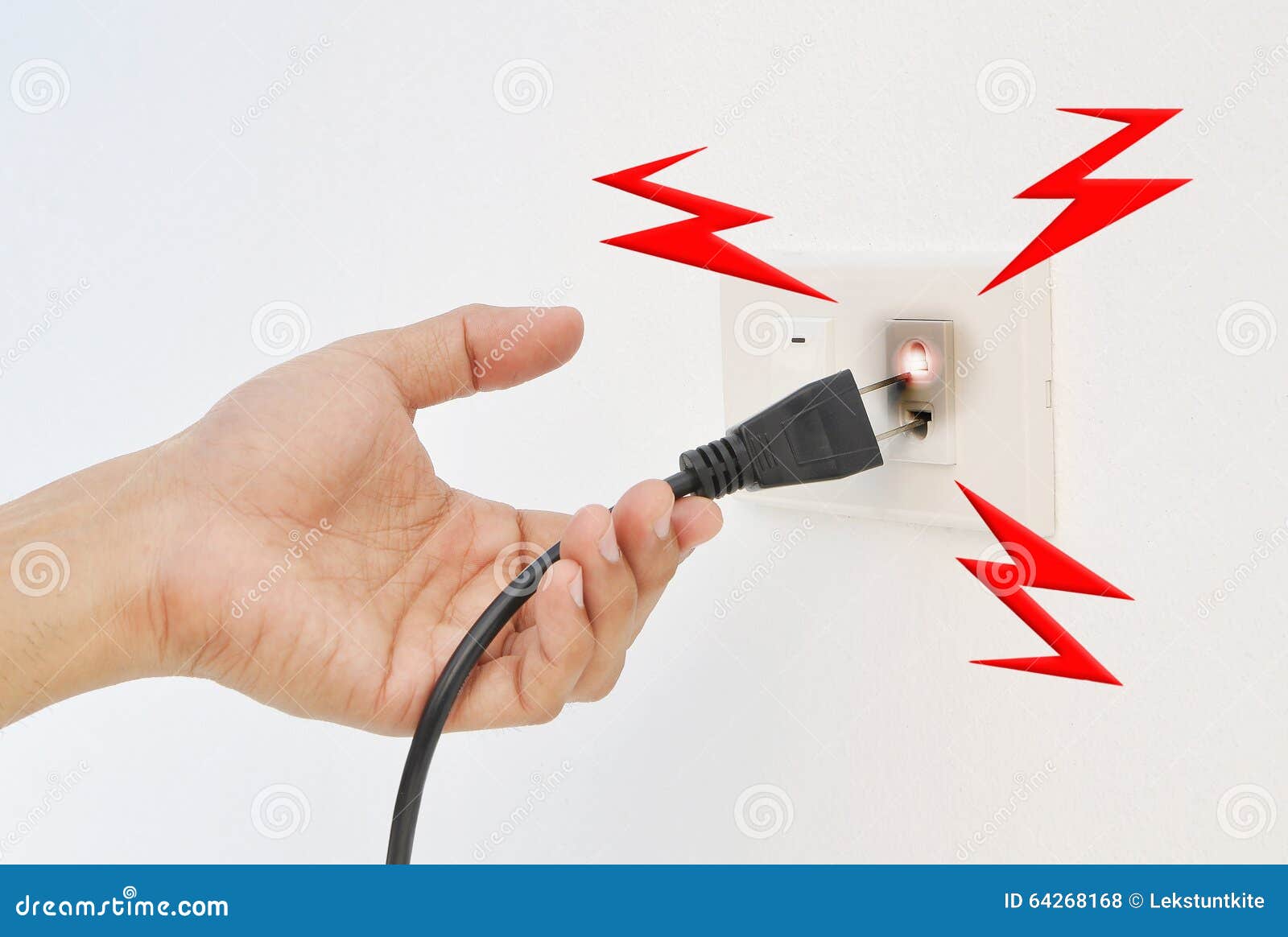 Results of the championship cycle. Quotas for non-screening competencies. View >>
Results of the championship cycle. Quotas for non-screening competencies. View >>
Results of allocation of quotas in the framework of the Qualifying Competitions for the right to participate in the VI Final of the National Championship “Young Professionals (WORLDSKILLS RUSSIA)”
WorldSkills Academy Continuing Education Programs
She is undergoing training under professional development programs for teachers (masters of the p / o) educational organizations that implement educational programs of open source software.View >>
Infrastructure sheets by competencies of the Final WSR 2018
Infrastructure lists for the competencies of the Final of the National Championship “Young Professionals” (WorldSkills Russia) 2018. View >>
Qualifying competitions for the right to participate in the Final of the National Championship “Young Professionals” (WorldSkills Russia) – 2018
Competition documentation for qualifying competitions in the framework of the Final of the WorldSkills Russia National Championship in 2018
Demo exam 2018
Results of the 2018 WorldSkills Regional Championship in the Sverdlovsk Region
This collection provides a summary of the analysis of the results of the Regional Championship “Young Professionals” (Worldskills Russia) of the Sverdlovsk Region in 2018.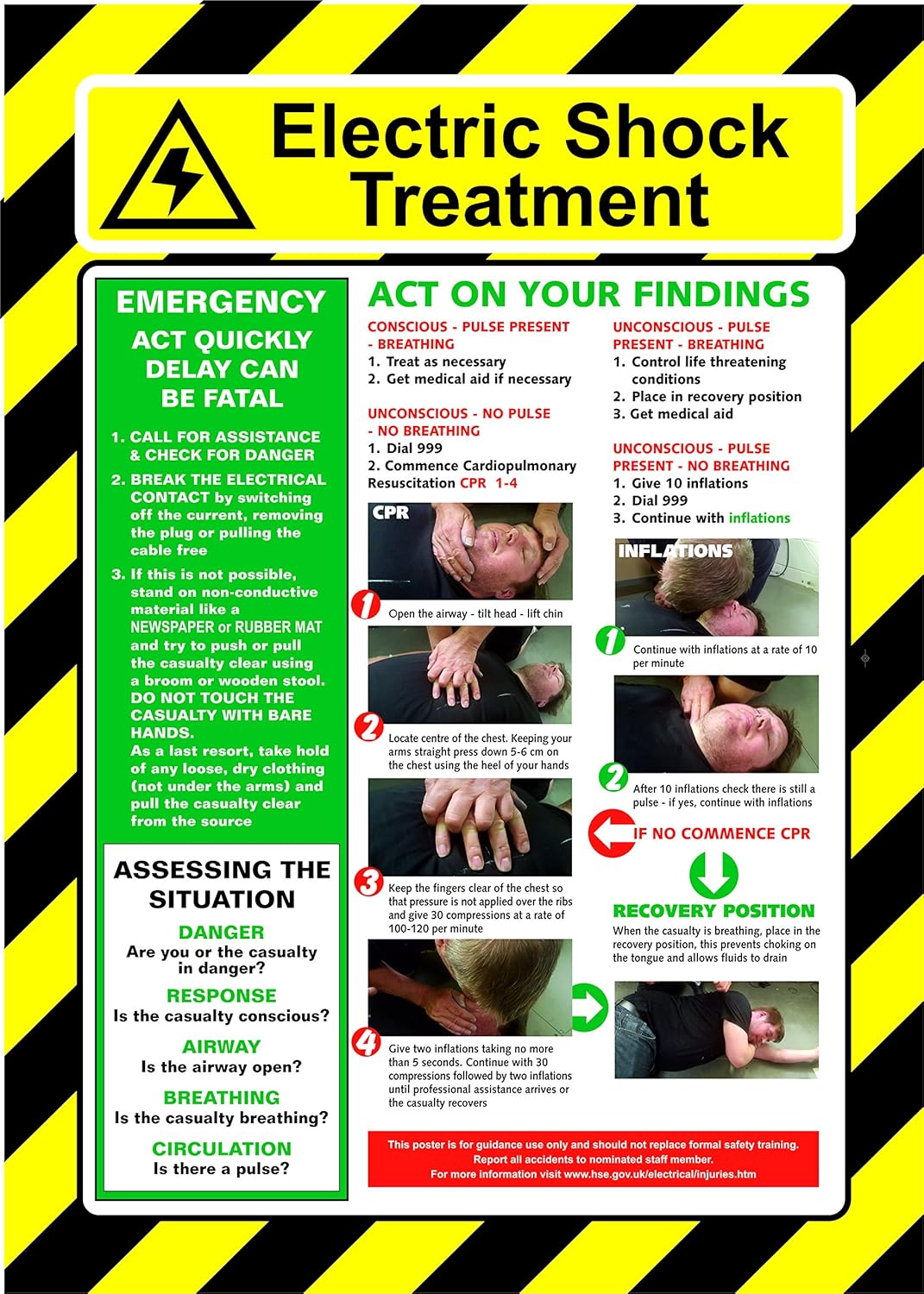 The collection contains information about the winners and prize-winners of the Regional Championship “Young Professionals” (WorldSkills Russia) of the Sverdlovsk Region in 2018. View >>
The collection contains information about the winners and prize-winners of the Regional Championship “Young Professionals” (WorldSkills Russia) of the Sverdlovsk Region in 2018. View >>
Results of the VI Open Regional Championship “Young Professionals” (WorldSkills Russia) of the Sverdlovsk Region
Mass media about the WorldSkills 2018 regional championship
Implantation of a three-chamber pacemaker with cardioverter-defibrillator function
Introduction
This information has been specially prepared for you, so that you, your family and friends can find answers to your questions on these pages.More than two million people, thanks to a pacemaker, live a full life – study, work, travel, play sports. Most patients with pacemakers remember about him only when they come for a medical examination, and in everyday life their activity in the family, on vacation and at work is no different from the people around them.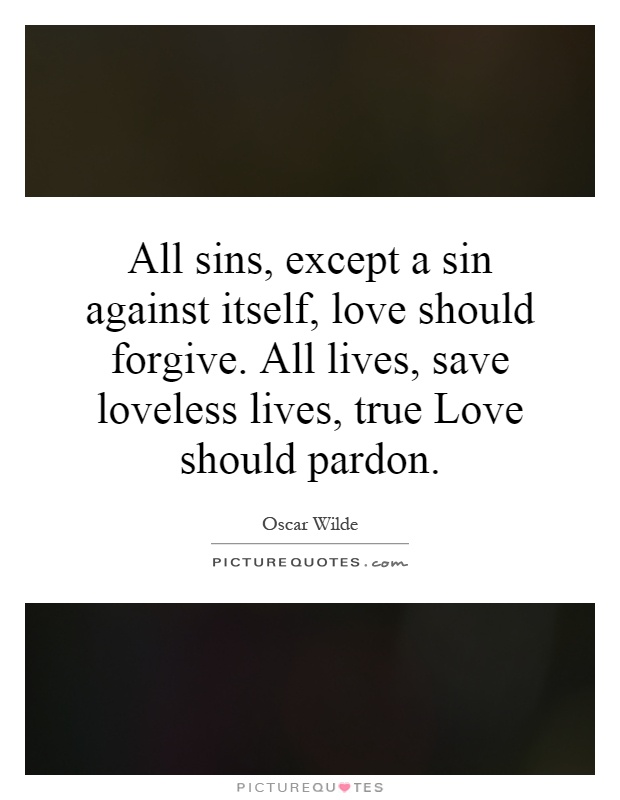
First of all, the main purpose of implantation of a pacemaker is to eliminate life-threatening arrhythmias and improve your quality of life.All subsequent restrictions and your regimen will depend on your physical condition, manifestations of the disease and the recommendations that you receive from your doctor.
Pacing and why it is necessary for your heart
The most common condition that requires the use of a pacemaker is called bradycardia, which means a heart rate that is too low for the body’s needs. Possible symptoms of bradycardia are dizziness, extreme fatigue, shortness of breath, fainting.Bradycardia is usually caused by one of the following heart conditions (or complications of the underlying condition), or a combination of both:
- Sick sinus syndrome (SSS) – the sinus node sends impulses infrequently, at too long or irregular intervals.
- Heart block – violation of the normal passage of electrical impulses of the heart. Heart block can occur at various levels of the conduction system, but this term usually refers to a blockade of conduction at the level of the atrioventricular (atrioventricular) node.
 In this case, the impulses produced by the sinus node do not reach the ventricles. The ventricles contract very rarely, in their own rhythm, asynchronously to the atria.
In this case, the impulses produced by the sinus node do not reach the ventricles. The ventricles contract very rarely, in their own rhythm, asynchronously to the atria.
Your heart rate usually beats between 60 and 80 beats per minute. A reading below 60 beats per minute is called bradycardia. For many people in good physical shape (or this rhythm occurs during rest and sleep), this rhythm is the norm. A distinctive feature of such bradycardia is that with an increase in physical activity, the heart rate begins to accelerate, covering the body’s need with its frequency.
About bradycardia, as a disease, we speak when the rhythm has a very low frequency, does not respond with an increase in frequency to physical activity, or long pauses occur in rhythmic contraction, which can reach or even exceed more than 2 seconds.
When bradycardia is diagnosed and such a rhythm is the only manifestation, then such a rhythm is effectively corrected by a pacemaker.
Pacemaker (ECS)
Modern pacemakers are miniature computers that monitor your heart’s own rhythm. Stimulants come in a variety of shapes and are generally small and lightweight (approximately 20 to 50 grams).
Stimulants come in a variety of shapes and are generally small and lightweight (approximately 20 to 50 grams).
The pacemaker consists of a titanium case, which contains a microcircuit and a battery.
The main function of a pacemaker is to monitor the rhythm of the heart and to stimulate if a rare or irregular rhythm with gaps in contractions occurs. If the heart beats with the correct frequency and rhythm, the pacemaker in this case does not work, but constantly monitors the heart’s own rhythm.
Each type of pacemaker is designed for a specific type of heart rhythm disorder. The indications for implantation are determined by your doctor, based on the data obtained from your examination.
Pacemakers can be either single-chamber or multi-chamber (two or three stimulating chambers). Each stimulation chamber is designed to stimulate one part of the heart. Two-chambered devices stimulate the atrium and right ventricle, and three-chambered cardio-resynchronizing devices (CRT) stimulate the right atrium, right and left ventricles.
Cardioresynchronous stimulants are used to treat severe forms of heart failure, eliminating uncoordinated contractions of the heart chambers (dyssynchrony).
Pacemakers can be equipped with touch sensors. Such stimulants are called frequency-adaptive, they use a special sensor that detects changes in the body (such as movement, nervous system activity, respiratory rate, body temperature). Frequency-adaptive stimulants (denoted by a special letter sign R – denotes frequency adaptation) are used for rigid, i.e.That is, the heart rate does not change depending on physical activity and emotional state, then in this case the increase in the rhythm for physical activity will occur due to the pacemaker.
Pacemaker consists of:
- Battery (accumulator)
The battery supplies electrical energy to the pacemaker and is designed for many years of trouble-free operation (up to 10 years). When the ECS battery capacity is depleted, the pacemaker is replaced with another one.
- Chip
Chip is like a small computer inside a pacemaker. The microcircuit converts the battery energy into electrical impulses to stimulate the heart. The microcircuit controls the duration and power of the electrical energy expended for the pulse. - Connector block
A transparent plastic block is located on top of the pacemaker. The connector block is used to connect the electrodes and the pacemaker.
Electrodes
The pacemaker is connected through the veins to the heart by means of special electrodes.Electrodes are attached to the cavities of the heart and have a connecting role between the activity of the heart and the stimulator.
The electrode is a special coiled conductor that is flexible enough to withstand twisting and bending caused by body movements and cardiac contractions. The electrode transmits to the heart an electrical impulse generated by the pacemaker and carries back information about the activity of the heart.
The contact of the electrode with the heart is made through a metal head at the end of the wire.With the help of it, the stimulator “monitors” the electrical activity of the heart and sends electrical impulses (stimulates) only when they are required by the heart.
Programmer
The programmer is a special computer that is used to control and change the settings of the pacemaker. The programmer is located in medical institutions where pacemakers are implanted or there is an advisory room for working with patients with pacemakers.
The doctor analyzes all the functions of the pacemaker and, if necessary, can change the settings necessary for the correct operation of the pacemaker.In addition to the technical information of the pacemaker, the doctor can view all registered heart events in chronological order. Such events include atrial and ventricular heart rhythm disturbances (atrial flutter and atrial fibrillation, supraventricular and ventricular tachycardias, ventricular fibrillation).
Types of pacemakers
If an implantation of a pacemaker is indicated for you, your doctor will decide which type of pacemaker is best for you, based on your health condition and the type of heart rhythm disorders.
Single chamber pacemaker
The single chamber pacemaker uses a single endocardial electrode placed in either the right atrium or the right ventricle to stimulate the heart chamber (atrium or ventricle).
Isolated atrial pacing is used in cases where the generation of sinus rhythm (SSS) is impaired while the atrioventricular junction (atrioventricular node) is still working. In this case, pacing completely or partially replaces the sinus rhythm function.
Ventricular stimulation is used if the patient has a permanent form of atrial fibrillation or transient atrioventricular blockade of sinus rhythm conduction to the ventricles. In rare cases, it can be implanted with complete atrioventricular block.
Dual-chamber pacemaker
A two-chamber pacemaker uses two endocardial electrodes to stimulate the right atrium and right ventricle.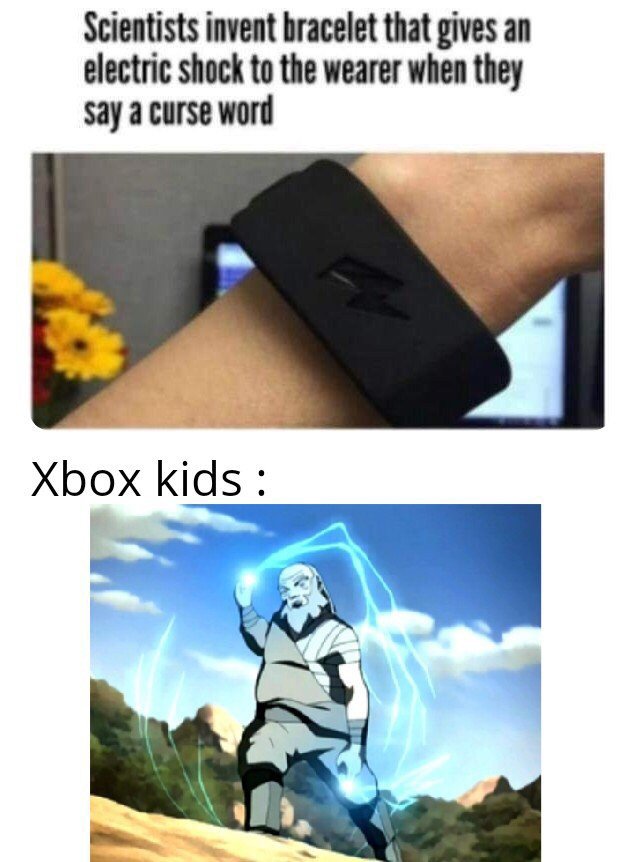 The electrodes are placed in the appropriate zones, thereby stimulating two chambers of the heart at once.
The electrodes are placed in the appropriate zones, thereby stimulating two chambers of the heart at once.
Dual-chamber pacemakers are used to synchronize the atria and ventricles in case of atrio-ventricular conduction disorder (AV junction dysfunction), which makes the heart rate closest to natural.
Both single-chamber and dual-chamber pacemakers can be equipped with a frequency adaptation function. The frequency adaptation function is used to increase the heart rate if its own natural rhythm cannot respond with an increase in frequency to physical activity or to the emotional state of a person.
Frequency adaptation is marked with the Latin letter R. In single-chamber stimulators, the designation SR is used, in two-chamber stimulators – DR.
Pacemaker implantation procedure
Pacemaker implantation is a surgical operation in which a small incision is made in the right (if you are left-handed) or left (if you are right-handed) subclavian region.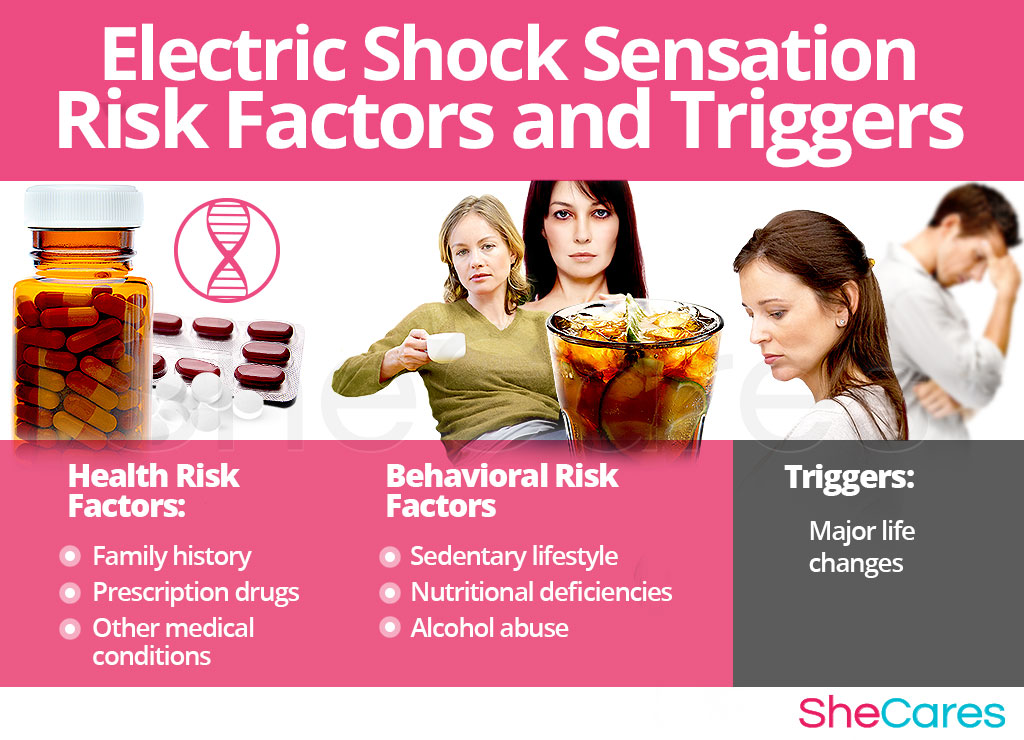 Depending on what kind of pacemaker you will be implanted, one, two or three electrodes will be inserted through a vein and placed inside the heart under X-ray control.
Depending on what kind of pacemaker you will be implanted, one, two or three electrodes will be inserted through a vein and placed inside the heart under X-ray control.
As with most surgical procedures, a short course of prophylactic therapy with antibiotics and anti-inflammatory drugs will be prescribed after the implantation of a pacemaker.
Before the operation, your doctor will limit or stop taking certain medications, the choice of anesthesia will be determined before the operation by the anesthesiologist. The operation of implantation (insertion) of the stimulator seems to be simple, since it does little to injure the tissues, it is carried out in an operating room equipped with an X-ray machine.A vein is punctured (punctured) under the collarbone, a special plastic tube (introducer) is inserted into it, through which endocardial electrodes are inserted into the superior vena cava (transvenous). Under X-ray control, electrodes are sent to the right atrium and right ventricle, where they are fixed.
The most difficult procedure is to place and secure the tip of the lead in the atrium and ventricle so that good contact is obtained. Usually the surgeon makes several tests, all the time measuring the threshold of excitability, i.e.that is, the smallest impulse value (in volts) to which the heart responds with a contraction visible on the ECG. The challenge is to find the most sensitive spot and at the same time get a good ECG graph recorded from the electrodes being placed. After fixing the electrodes, they are connected to a stimulator, which is placed in a formed bed under the fascia of adipose tissue or under the muscles of the chest.
Of course, the operation requires strict sterility and careful control of bleeding in order to avoid the accumulation of blood under the skin and suppuration.The stimulator itself and electrodes are supplied sterile. In total, all manipulations take from an hour to two hours.
The described method is most often used for implantation of a pacemaker in surgical practice. There are other implantation methods that are used in connection with certain features or concomitant diseases of the cardiovascular system.
If the patient is planned to undergo open-heart surgery due to his underlying disease and there are indications for implantation of a pacemaker, then, as a rule, the electrodes will be placed epicardially (outer shell of the heart), and the pacemaker will be placed in the rectus abdominis muscle.This placement of the electrodes is optimal in that the electrodes do not come into contact with human blood and are not in the heart cavity.
What is CRT / ICD?
There are a large number of pacemakers (pacemakers), which are designed to treat cardiac arrhythmias and conduction disorders. Depending on the complexity of the arrhythmias, your doctor will suggest one or another type of pacemaker. Its size will depend on the specificity of the stimulator and its functions and the capacity of the ECS battery.The first stimulators developed were placed on a cart and paced through wires to the heart. Over the past three decades of technological progress, pacemakers with a large battery capacity and dimensions no larger than a matchbox have been introduced into clinical activity, complex in their functional significance.
In the late 90s, implantable cardioverter-defibrillator ICD (ICD) and cardiac resynchronization devices, CRT (CRT) were developed and put into practice.The first pacemakers were presented separately, were of great weight and size. Cases are described when it was necessary to immediately implant two stimulators of the CRT and ICD in one person.
Implantable cardioverter-defibrillator with cardioresynchronization therapy ICD / CRT is a combined device designed for the treatment of heart failure and suppression (relief) of ventricular tachycardia or ventricular fibrillation (life-threatening arrhythmias).
CRT (CRT) cardiac resynchronization therapy
It is used for the treatment of chronic heart failure (CHF) III or IV FC.Stimulation is performed by synchronizing the right and left ventricles of the heart with synchronization of the atrial rhythm. The second name of such a pacemaker is biventricular (two ventricles) pacemaker. The third name is a three-chambered pacemaker (three chambers for stimulating the right atrium, right and left ventricles).
ICD (ICD) implantable cardioverter defibrillator.
It is used to detect and control the majority of cardiac arrhythmias. Its main function is to restore the heart rhythm by shock discharge (defibrillation) in the event of ventricular tachycardia (VT) or ventricular fibrillation.In addition to the possibility of shock discharge, a function of painless suppression of VT by ultra-frequent and programmed stimulation is provided.
After implantation, the pacemaker operates in automatic mode.
The stimulator does not exceed the size of a pager or the palm of a small child.
Why does my doctor recommend CRT / ICD implantation?
Doctor’s recommendations are based on the results of studies that confirm the diagnosis and the existence of a threat to your life.
In many patients, severe systolic heart failure is accompanied by significant intra- or interventricular conduction delays, which lead to a violation of synchronicity of contraction, which is accompanied by a decrease in the efficiency of the pumping function of the ventricles.
1. In connection with progressive symptoms of heart failure, which are accompanied by shortness of breath, swelling of the legs, weakness:
- Patients in whom the ventricles of the heart do not contract together (ventricular dyssynchrony).
- Patients with symptom refractory to drug therapy – no improvement in quality of life (NYHA functional class III or IV).
- Patients with ineffective heart function – low ejection fraction (35% and below), increased volume and size of the heart.
Pacemakers with CRT / ICD function are able to restore synchronous cardiac contraction and, as a result, eliminate the symptoms associated with heart failure. Studies have shown that the majority of patients after CRT / ICD implantation experience an improvement in well-being and quality of life, an increase in exercise tolerance.
2. Your heart may be prone to very life-threatening heartbeats. Heart rhythm disturbances can occur in almost every person, but are more often caused by coronary heart disease, myocardial infarction, heart defects, cardiomyopathies and inflammatory diseases.
Ventricular tachycardia is a life-threatening rhythm disturbance. With excessively frequent contractions, the ventricles of the heart do not have time to fill with a sufficient amount of blood.As a result, not enough blood is supplied to organs, including the brain. In this case, in addition to palpitations, weakness, dizziness may be felt, and loss of consciousness is possible.
Ventricular tachycardia is accompanied by a decrease in blood pressure and in some cases can cause ventricular fibrillation. Cardiac arrest is a very formidable event that requires emergency medical attention and defibrillation to restore the heart rhythm.Unfortunately, this procedure is not always possible in the first minutes of cardiac arrest. Therefore, the implantable CRT / ICD has a built-in defibrillator, which provides emergency therapy (shock discharge) necessary to restore the normal rhythm.
Are there any alternative treatments?
Alternative treatment for heart failure.
Possibility of alternative treatment depends on the form and stage of heart failure.
Mild forms of heart failure respond well to drug treatment, lifestyle changes and dietary intake.The main in the treatment of heart failure is a strict diet and the use of drug therapy aimed at eliminating the causes of heart failure.
If the cause of heart failure is coronary artery disease or valvular heart disease, your doctor will refer you to a cardiac surgeon. Surgical correction of valvular pathology, angioplasty of the affected arteries of the heart can completely eliminate all symptoms and manifestations of heart failure.
In the most difficult cases of heart failure with ineffective drug therapy to save the patient’s life, the issue of cardiac transplantation or the use of left ventricular bypass systems (artificial heart ventricle) will be considered.
Cardiac resynchronization devices (CRT) are considered as an alternative to heart transplantation (TC).
The emergence of cardioresynchronizing devices in medical practice made it possible to effectively combat the manifestations of HF in cases when the cause of HF is myocardial dyssynchrony, low ejection fraction, and left bundle branch block (LBBB).Numerous implantations of devices have given grounds to consider the effect of such therapy not only as a “bridge to transplantation”, but also as a “bridge to recovery”. CRT implantation is indicated for patients with severe forms of heart failure, NYHA functional class III-IV.
Alternative treatments for life threatening cardiac arrhythmias.
Cardiac arrhythmias can occur in different parts of the heart and manifest as extrasystole or a very fast rhythm (tachycardia). As a rule, heart rhythm disturbances are divided into functional (reversible) and organic (non-reversible).Functional disorders include those types of heart rhythm disorders that are caused by endocrine and metabolic disorders, poisoning, alcohol use, and severe stress. Timely correction and elimination of the causes that caused the arrhythmia leads to recovery.
The most dangerous arrhythmias are rhythm disturbances caused by damage or changes in the myocardium, which are observed in myocardial infarction, myocarditis, cardiosclerosis, arrhythmogenic right ventricular dysplasia, etc.
Most cardiac arrhythmias respond to antiarrhythmic therapy. Radiofrequency ablation (RFA) of abnormal heart rhythms is an effective method of surgical treatment. However, for many patients, antiarrhythmic therapy may not be effective, and RFA is contraindicated due to the anatomical features and severity of the patient’s condition. In such a situation, pacemakers with ICD function are the best method and choice for preventing formidable complications of VT.
It is obvious that severe forms of HF are often accompanied by attacks of VT, the occurrence of which can be fatal for a patient with HF.Many studies carried out around the world have confirmed the high efficiency of implantable cardiac pacemakers with CRT / ICD function.
Thus, CRT / ICD provides resynchronization therapy for severe forms of heart failure and high protection against the risk of death from life-threatening arrhythmias and cardiac arrest.
Indications and contraindications for CRT / ICD implantation
Your doctor will determine the indications for implantation of cardioresynchronizing devices, CRT / ICD, based on your medical history and medical research.
Indications for CRT / ICD implantation:
- Moderate to severe heart failure (III-IV functional class), when the symptoms of heart failure do not respond to drug therapy in compliance with all diet regimens (water restriction, etc.).
- Decrease in contractility of the heart. The ejection fraction is equal to or less than 35%.
- Uncoordinated ventricular contractions with manifestation of electrical dyssynchrony of the myocardium on the electrocardiogram (QRS duration is more than 120 milliseconds), and / or during echocardiographic examination with the detection of mechanical dyssynchrony of the walls of the left ventricular myocardium.
Patients with heart failure who are not eligible for CRT / ICD implantation and who do not meet the indications for cardiac resynchronization (determined by the attending physician):
- Patients with moderate heart failure (functional class I-II) whose symptoms are well controlled by drug therapy and diet.
- Patients whose heart failure is not associated with uncoordinated ventricular contractions (no dyssynchrony).
What is ICD?
An implantable cardioverter defibrillator (ICD) is used to treat heart rhythm disturbances in which your heart beats too quickly or irregularly. When the ICD detects a heart rate that is too fast, it sends electrical impulses to your heart. These impulses can restore the normal rhythm of the heart. The ICD is a combination of a pacemaker and a defibrillator, and its basic functions will be detailed in the sections of this booklet.The ICD is implanted in the upper chest and is small in size and fits the palm of a small child or the size of a pager. Implantation is carried out strictly according to confirmed indications, after studies carried out on the recommendations of a doctor.
Why does my doctor recommend ICD implantation?
Cessation of blood circulation in a patient can occur with conduction disturbances (blockades), ventricular fibrillation and ventricular tachycardia.
If a person for this reason has a high risk of circulatory arrest, a cardioverter defibrillator is implanted.In addition to the stimulation function for bradystolic rhythm disturbances, it has the function of interrupting ventricular fibrillation (as well as ventricular flutter, ventricular tachycardia).
ICD implanted:
90,119 90,017 patients who have had episodes of sudden cardiac death or ventricular fibrillation;
90,017 patients who have had a heart attack and are at high risk of sudden cardiac death;
90,017 patients with hypertrophic cardiomyopathy and high risk of sudden cardiac death;
90,017 patients who have had at least one episode of ventricular tachycardia;
Are there alternative treatments?
Cardiac arrhythmias are a very complex branch of cardiology.The human heart works all his life. It contracts and relaxes 50 to 150 times per minute. During the systole phase, the heart contracts, providing blood flow and the delivery of oxygen and nutrients throughout the body. In the diastole phase, it rests. Therefore, it is very important that the heart beats at regular intervals.
Violation of the heart rhythm is a violation of the frequency, rhythm and sequence of contractions of the heart muscle. Heart rhythm disturbances can occur in different parts of the heart and manifest as extrasystole (extraordinary contraction) or a very fast rhythm (tachycardia).As a rule, heart rhythm disturbances are divided into functional (reversible) and organic (non-reversible). Functional disorders include those types of heart rhythm disorders that are caused by endocrine and metabolic disorders, poisoning, alcohol use, and severe stress. Timely correction and elimination of the causes that caused the arrhythmia, leads to recovery.
The most dangerous arrhythmias are those arrhythmias that are caused by damage or changes in the myocardium, which are observed in myocardial infarction, myocarditis, cardiosclerosis, arrhythmogenic right ventricular dysplasia, etc.Most cardiac arrhythmias respond to antiarrhythmic therapy. Radiofrequency ablation (RFA) of abnormal heart rhythms is an effective method of surgical treatment. However, for many patients, antiarrhythmic therapy may not be effective, and RFA is contraindicated due to the anatomical features and severity of the patient’s condition. In such a situation, pacemakers with ICD function are the best method and choice for preventing severe complications of VT.
Who should not get an ICD implantation?
Not all patients are candidates for ICD implantation.In many patients, the tachyarrhythmia is temporary or in cases where the use of an ICD cannot eliminate the underlying cause.
These include:
- Patients whose tachyarrhythmias are associated with a reversible cause, such as drug addiction treatment, electrolyte balance, etc.
- Patients with tachyarrhythmias due to heart attack or intermittent episodes of myocardial ischemia.
- Patients with frequent episodes or continuous VT.
- Patients who develop tachyarrhythmias after being struck by lightning or electric shock.
Should I be worried about my ICD?
The
ICD is designed to improve quality of life by helping to overcome symptoms and provide confidence in the face of the effects of sudden cardiac arrest. Remember, your ICD is needed to protect you from tachyarrhythmias. ICD pacemakers are extremely reliable – they save lives every day.
Allow yourself and your family to adapt to life with ICD.Most patients quickly get used to it. However, some feel depressed, anxious, fearful. If these feelings persist after 2 months, consult your doctor. You can also consult with another person who has had similar surgery and ask him how he and his family have adapted. Over time, you will feel confident. You will be able to return to work, business and family life. Your family can help you. You need to give her information about the cardioverter defibrillator and what help you may need.
Will I be in pain or discomfort?
Adaptation to ICD is gradual. Follow your doctor’s advice first. Most patients feel “protected” from the disease and are able to return to a fulfilling and active life.
After the wound has healed, pain is unlikely; discomfort will remain for some time at the site of the stimulator when raising the arm. Typically, many patients forget that they have an ICD implanted. After the formation of the scar, only a thin light strip remains.
WARNING: Consult a physician if pain persists after a wound heals.
Will ICD Cure My Disease?
ICD implantation is indicated for tachycardia that is dangerous to your health and life. Despite the fact that ICD is not a panacea, it reliably copes with threatening rhythm disturbances and in most cases returns a person to a normal and fulfilling life.
During an attack of ventricular tachycardia, you may experience loss of consciousness, and when the ICD is triggered, your muscle groups will contract with the visual effect of jumping (violent jerking).Your relatives or colleagues must have an ambulance and a doctor’s phone number. They should definitely call an ambulance if you remain unconscious for more than a minute.
How often should I have a follow-up examination with a doctor after a pacemaker implantation?
The regularity of follow-up examinations also depends on the characteristics of the cardiac stimulation system and the nature of the patient’s disease. Your doctor will determine the frequency of check-ups required according to the condition of the battery, the course of the disease, and the characteristics of the pacing system.
Is it possible to displace the pacemaker in its bed after implantation?
Slight displacement of the pacemaker is possible if the pocket of the pacemaker bed increases in size due to overgrowth of surrounding tissue or if the pacemaker is implanted directly under the skin.
Usually, for safety reasons, the pacemaker is fixed in the bed with a special ligature, which prevents it from moving.
There have been cases when patients with an implanted pacemaker gradually rotated it in their pocket around the ends of the electrode – the so-called “vertun syndrome”.Doing so can lead to infection of the pacemaker bed or the skin above it and damage to the pacemaker electrodes.
If you have any questions about cardiac stimulation systems, we recommend that you consult your doctor.
90,000 What you need to know to protect your TV before a thunderstorm.
About lightning and damage
During inclement weather and thunderstorms, accidents such as electric shock or damage to the TV may occur.This is called a direct lightning strike. When lightning strikes in a voltage generating zone, we call it an indirect lightning strike. Such abnormal voltages and electrical currents can be transmitted to the TV through an electrical outlet or antenna cable and cause damage to the inside of the TV.
When Thunder Begins
Lightning strikes are known to generate very high voltages and currents. As there is a risk of electric shock, do not touch antenna cables or power plugs when thunder is heard.
When a thunderstorm is predicted
- Turn off the TV and then unplug the power cord from the electrical outlet.
- If you are recording to a USB external hard drive, stop recording first.
- When the power cable is unplugged, the program guide will not be updated.
- Disconnect all cables connected to the TV, such as the antenna cable, HDMI cable, and LAN cable.
- When the storm is over, reconnect the power cable, antenna cable, HDMI cable and LAN cable to the TV.
If you cannot turn on the TV after a thunderstorm
If after a thunderstorm you cannot turn on the TV or no picture appears, the TV may have temporarily stopped working.
To check if the TV can work properly again, use the procedure below to unplug the power cord from the electrical outlet and restart the TV.
- Turn off the TV.
- Disconnect the TV’s power cable from the electrical outlet.
- After about one hour, reconnect the power cord to the electrical outlet.
- Turn on the TV.
If the problem persists, the TV may need to be repaired.
Detailed instructions. Scientists have told how to love Mondays
Many people are afraid of Mondays because of the increased anxiety level before the new work week, but there are reasons for this and this fear can be overcome.
Fear of the beginning of the upcoming working days often arises on weekends, namely on Sunday. But in order to defeat this fear, you need to understand how it arises, and then take the necessary measures to eliminate it, Forbes reports.
FOCUS on Google News.
Subscribe – and always be in the know.
According to Alison Escalante of Rush University in Chicago, who is the author of the new article, fear of the work week stems from two reasons: overworking at work or undercharging on weekends.
Fear and Sunday
The fear that occurs on Sunday, according to scientists, is different from anxiety. Fear is the feeling people get when they expect pain. But where anxiety forces people to avoid pain, fear prompts them to end it. That’s why in one experiment, people with fear of electric shock were willing to accept a stronger current right away rather than wait for a weaker one later, Escalante says.
“But if we expect pain on the weekends, we have to ask ourselves what is so painful about our workdays? To get rid of our fear of the work week, we need to identify these sources of pain,” says Escalante.
Why are we afraid of work?
From a neurocognitive perspective, pain is a broader term than just pain from a blow to the toe. When we experience overstimulation of our feelings and emotions, our brain perceives it as a harmful stimulus. In other words, the brain considers situations that overwhelm us to be painful.
Work can be painful for two reasons:
- Either the workplace, the tasks being performed, or the people around us require us to exert excessive effort;
- Or we don’t get enough rest on the weekend.
If a person is not sufficiently rested, then he perceives his work as an overwhelming factor, because the energy reserves accumulated over the weekend are not enough to complete the work.
Face to face with our fear
Expectation of pain aggravates the situation, and fear is the maximum expectation of pain. So one of the solutions to this problem is to distract yourself. But the more we are distracted to avoid fear of pain, the more often we can develop bad habits, such as excessive alcohol consumption.Instead, try a milder strategy for dealing with fear that I developed based on neuroscience: the “take a breath, look and start,” says Escalante.
Photo: Forbes
Breathe, look and begin
- Breathe. When we breathe in, deep breaths and slow exhalation directly calm our nervous system. If we consciously sigh, this is a chance to connect with our body and emotions, and thus reduce anxiety or fear.
- Look. See what this fear is trying to tell you. Imagine it’s part of yourself and see what she’s trying to say. One way to understand emotions is through thoughts generated by your neurosensory system to get your attention. Negative emotions like fear often try to get you to work on a problem. Try saying to yourself, “Hey fear, you’re trying to tell me something about this work week. Let me see if I agree with your point of view.”
- Get started. Start fighting what you fear. Find out what the problem is. If this is a disagreement with colleagues – think about how it can be resolved. The situation is the same with the tasks being performed, which seem to be difficult to accomplish. And if you are afraid of your workplace in general, because it poisons you, then it’s time to think about a new job.
“If you start the work week already exhausted, then reconsider the way you rest on the weekend,” says Escalante. “If the problem is your work is unpredictable and you can’t handle it, repeat step three regularly.”
In many cases, a similar 5-10 minute meditation several times a week helps, Escalante summarizes.
.

 Overhead power lines usually aren’t insulated. Stay at least 20 feet (about 6 meters) away — farther if wires are jumping and sparking.
Overhead power lines usually aren’t insulated. Stay at least 20 feet (about 6 meters) away — farther if wires are jumping and sparking.
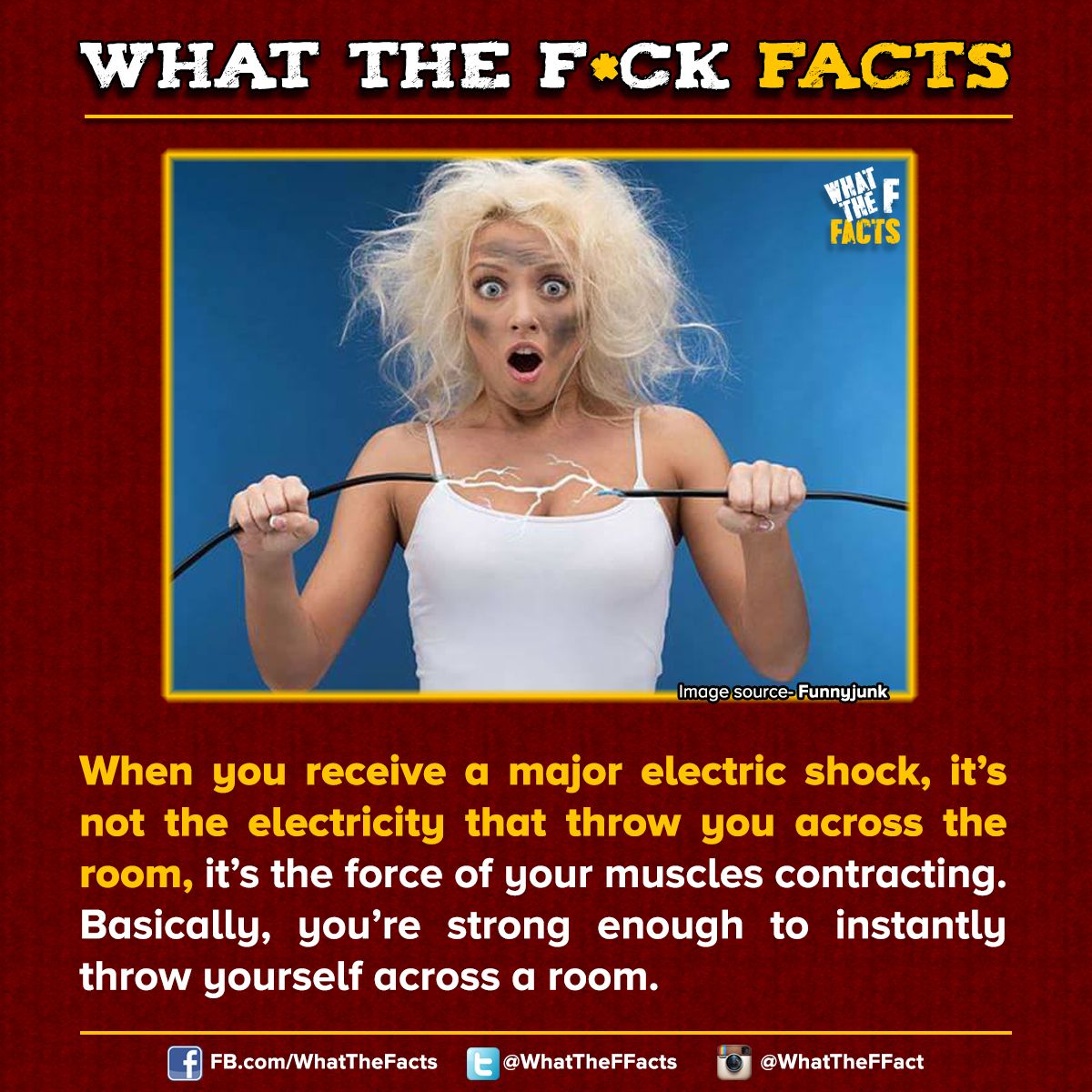 22, 2018.
22, 2018.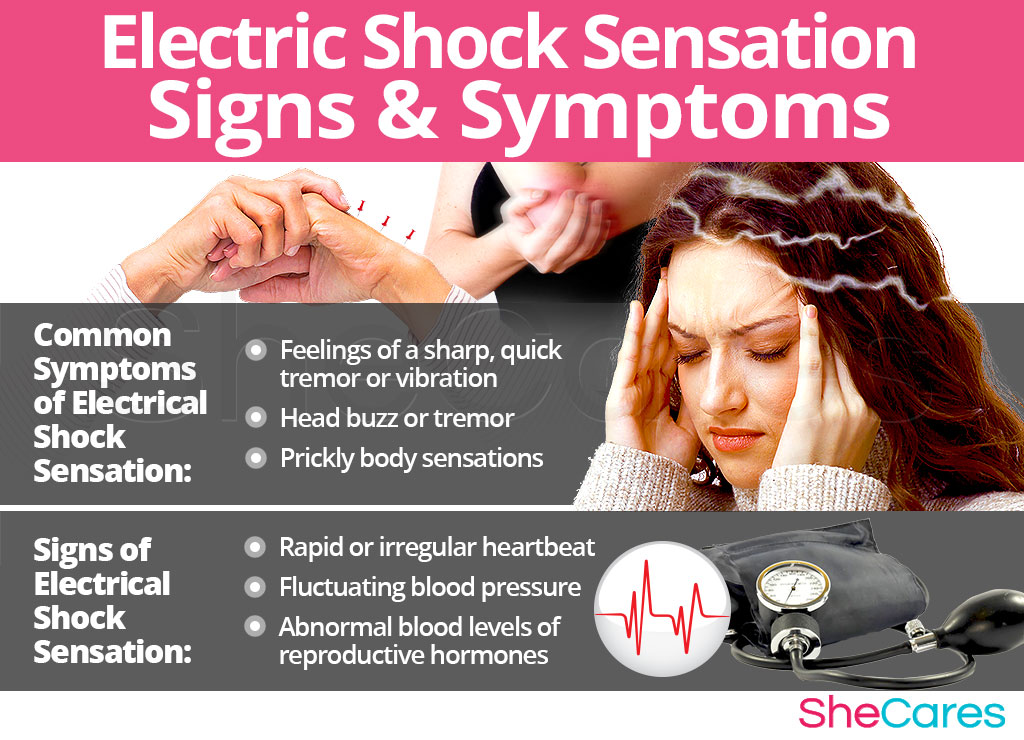

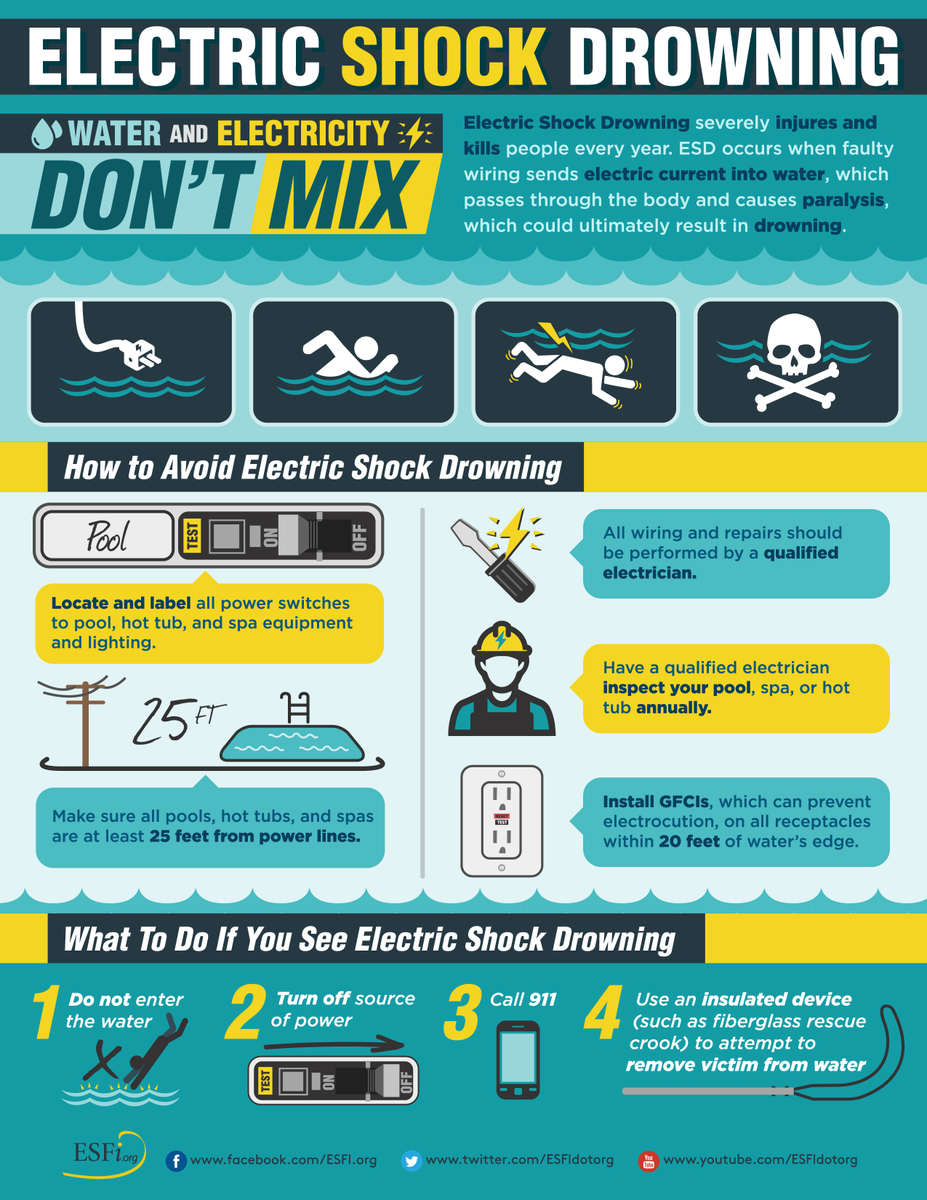 Large appliances such as clothes dryers, ranges, air conditioners and electric heaters can create particularly dangerous arcs when disconnected or connected under load.
Large appliances such as clothes dryers, ranges, air conditioners and electric heaters can create particularly dangerous arcs when disconnected or connected under load.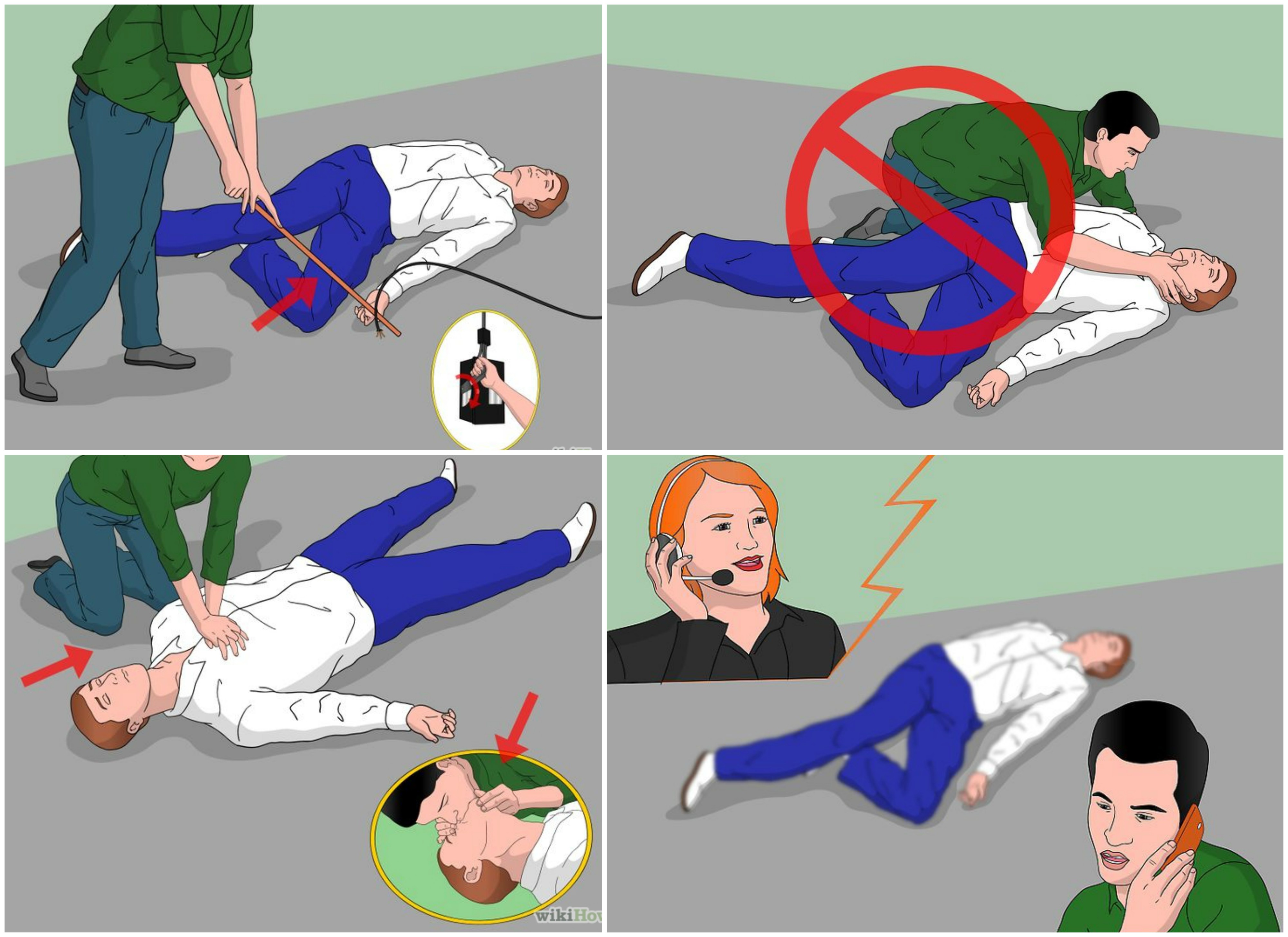 To do this, you can throw a clean, dry towel, cloth, sheet or diaper over the wound. If the fabric is pre-ironed, it must be cooled. You can also use special dressing kits.
To do this, you can throw a clean, dry towel, cloth, sheet or diaper over the wound. If the fabric is pre-ironed, it must be cooled. You can also use special dressing kits. In this case, the impulses produced by the sinus node do not reach the ventricles. The ventricles contract very rarely, in their own rhythm, asynchronously to the atria.
In this case, the impulses produced by the sinus node do not reach the ventricles. The ventricles contract very rarely, in their own rhythm, asynchronously to the atria.